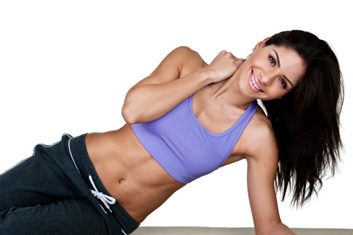
Get a supportive, comfortable sports bra
A sports bra must fit properly if you are going to get the most out of your workout, but the truth is, more than 80 percent of women are wearing the wrong one.
We spoke to sports bra expert Dr. Deirdre McGhee, a researcher and sports physiotherapist at the University of Wollongong in Sydney, Australia, for tips on getting the best bra for your workout. Here’s what to keep in mind to make sure your sports bra is supportive and comfortable.
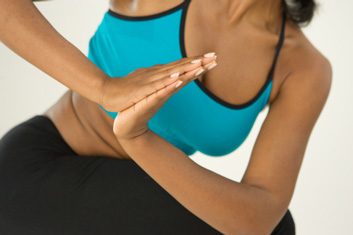
Let down 1: Embarrassment stops you from exercising
Breasts come in all shapes and sizes, but they should not spill out the sides or the top of a bra. If you’re constantly worried about your breasts escaping during a workout, how will you perform that push-up properly?
Your breasts should also not escape below the bottom band when you lift your arms over your head. The bottom band should be snug enough so it stays put and does not move up and down. Lululemon’s Flip Your Dog Bra is one option that has gripper elastic inside the bottom band to “act as a supportive ledge for our ladies.”
Too much movement from your breasts during a workout can also be embarrassing, especially when excessive movement causes pain. That’s why it’s important to make sure your bra fits just as well as your running shoes. While many sports bra brands are sold in small, medium, large or extra-large sizes, more and more retailers such as The Running Room, Victoria’s Secret and New Balance sell sports bras by band and bust size with a rating system to indicate medium, high or maximum support.
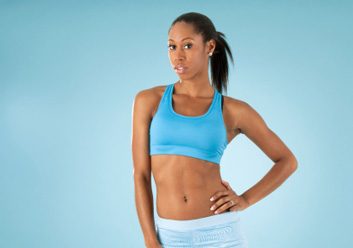
Let down 2: Too much movement causes pain and discomfort
Studies show that unsupported breasts can move up and down as much as 12 cm during high impact activities like running, because they lack their own anatomical support. In fact, the skin covering your breasts is one of the main sources of support. As skin elasticity decreases with age, so does its support. Older women, especially those who have had children, require greater support.
Large breast sizes also require a more supportive bra, regardless of the sport. Wearing a flimsy bra is a recipe for pain for any well-endowed woman who likes to run, play soccer or volleyball.
“Try out your desired activity in the change room with the new bra and make sure there is minimal breast discomfort,” says McGhee. Jump up and down, and jog on the spot to determine if the bra is going to provide enough support.
There are three basic types of sports bras:
1. Fashion bras won’t completely cover your breasts, and typically have thin straps and stretchy material. These provide little, if any, support.
2. Crop tops cover and compress breasts against your chest, and have a wide elastic band that sits under the breasts. This type of sports bra doesn’t have cups.
3. Structured bras completely cover the breasts in structured, sized cups. This type of sports bra usually has wide, padded straps and may have underwires.
For more information, you can check out Breast Research Australia’s Sports Bra app (available on iTunes for $0.99). “The app uses high speed videos of breast movement on small, medium and large chested women to show excessive and acceptable breast movement,” says McGhee.
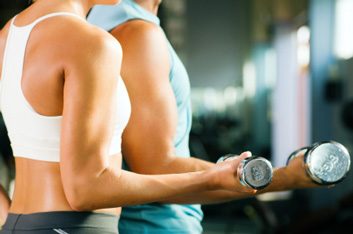
Let down 3: Your bra fit interferes with sport performance
Your bra should not keep you from fully participating in your chosen sport. An unsupportive or improperly fitted bra may contribute to slouching-something to be aware of, since good posture is essential for you to properly perform many exercises, especially those using weights. To make sure this won’t happen to you, ask yourself the following questions:
• Can you move your arms freely? The straps should be wide enough for good support, but not dig into your shoulders. Look for padded straps for added comfort.
• Can you breathe comfortably? A crop top should have the right amount of compression to minimize bounce but still allow you to breathe normally.
• Does the material wick sweat? Choose technical fabrics like polyester instead of cotton for maximum heat management that allows sweat to evaporate.
• Are the underwires cutting in? Underwires should fit the shape of your breasts correctly by sitting on the chest wall, against the breastbone and should not rest on breast tissue.
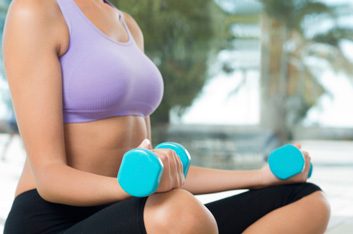
Let down 4: Not enough support during your menstrual cycle
Are you expecting your sports bra to support you the same every day of the month? Breasts change size throughout your menstrual cycle, so you may sometimes need to switch to a different bra or wear two. McGhee also recommends donning a crop top over a structured sports bra to ensure proper support when women’s breasts are larger at certain times of the month.
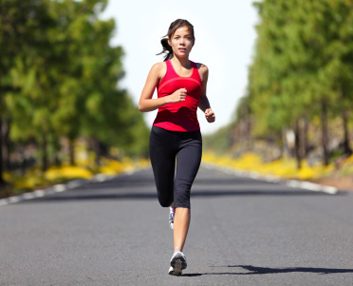
Let down 5: Your sports bra has worn out
You replace your shoes when they’re worn out, and the same should be true for your sports bra. It’s time to replace your bra if your current support system is stretched out, allowing too much bounce or chafing. If you buy a bra with an adjustable bottom band, start with the loosest hooks so that you can tighten the fit over time as the elastic stretches with wear. Have a look in the mirror every few months to check if the fit is still good and keep a written log to remember purchase details.
Related:
• Find the right sports bra for you
• The best bras for runners
• 12 bad excuses to skip running
